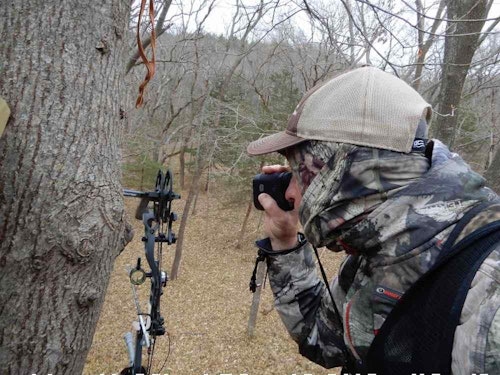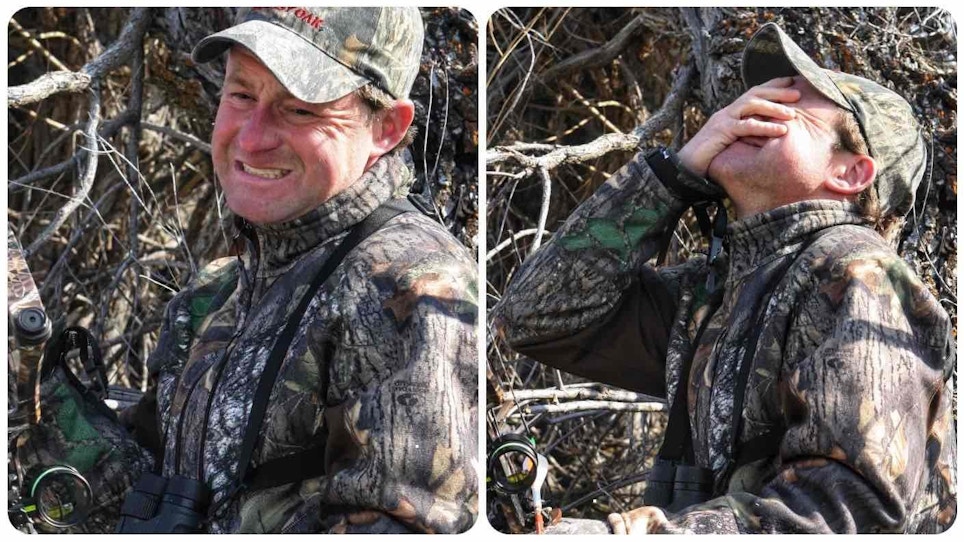Every experience, good or bad, is a learning opportunity. Gandhi or Socrates likely spoke those words of wisdom, but I am writing them down for bowhunters to ponder. In the world of bowhunting whitetails, an unpleasant experience can crush your hopes for the season, but once you have finished kicking yourself in the butt, sit back and reflect what you learned from a failed encounter.
Here are a few examples of hunts gone bad where I wanted to pull the covers over my head and never get out of bed again. I quickly came out from under the covers and the lessons learned have paved the way for more success throughout my bowhunting years.
Bad Ending on the Bad River
A long time ago before modern rangefinders, the buck of my dreams made a patternable mistake. The pre-rut rocks for patterning bucks, and I just scored a home run as I watched the buck sneak into the river breaks like he had several days in a row. His objective was a brushy bench. If he followed his previous routine, he would repeat his established rut route again at dusk. This time I would be ready when he passed along the trail.
A lone cottonwood near a river crossing on the Bad River in South Dakota was my ambush site, and a doe decoy underneath provided the bait. Like a metro commuter, the buck showed up on time in the thoroughfare and ambled his way to the targeted crossing. Would he make it before the end of shooting light?
With minutes ticking by, the buck finally was near enough to see the doe decoy and homed in on it. I now had a clearer view of the buck. He was definitely 5.5 or 6.5 years old. The mass on his antlers was incredible, and matching, thumb-sized kicker points on his G2 points made him undeniably identifiable.
Shockingly, his path was bringing him directly under me, and in my inexperience, I recalled the sage advice of “aim low” for vertical shots. At less than 10 yards he paused, and I held a few inches low with my 20-yard bowsight pin for nearly straight-down shot. Instead of a slam dunk, my shot grazed the buck’s side and he bolted out of my life forever with the brand of a Zwickey broadhead etched into his hide.
Lesson learned: For point-blank shots (less than 10 yards), you actually have to use your 30- or even 40-yard pin to hit the bull’s-eye. (Sage advice is sometimes wrong.) Test your own archery setup to verify. Because I didn’t understand this principle, the massive buck survived another day, and I cried myself to sleep later that evening.
Unwelcome in the Jungle
With the whitetail rut about ready to explode, I didn’t want to waste a minute of bowhunting, including the midday hours. I knew the bedding area of the deer on the river-bottom farm I was hunting. Instead of napping back at camp, I decided to sneak into the jungle to roust an anxious buck.
The cover was thick as I stooped and crawled into an edge location with a downwind position. Instead of separating myself from the Montana Decoy Trixie Doe, I opted to stay behind it. With the decoy staked, I started with some soft, tending grunts. With no takers arriving, I switched to the boldness of a buck fight with rattling and grunting to round out the performance. That irritated the neighbors.
Moments later I could make out the recognizable sounds of hooves in the leaves, well before seeing the buck in the jungle environment. Gripping the bow tighter than the rails on a racing roller coaster, I caught sight of the noisemaker. I almost went into cardiac arrest! Instead of a typical 4x4 adolescent troublemaker, a stunning non-typical materialized. With the grace of an Olympic skater, he weaved the gnarly frame through the maze of hanging limbs and small saplings.
At 30 yards straight on, he hit the pause button when he spotted the doe decoy. By chance, he braked with several tree trunks covering his vitals. I had no shot, and he was inspecting the decoy like your mother checked you over before you jumped on the grade school bus. After what seemed like an eternity (a minute or two), he turned and disappeared in the same apparition fashion as his arrival.
Lesson learned: Add doe-in-heat scent, separate yourself from the decoy, and take up a position off to one side with favorable wind. When the buck pauses for a scent check, or circles the decoy, you may get a shot instead of a memory.

Roadblock on the Yellow Brick Road
It was the first time I was invited to hunt my now, long-time hunting pal Greg Gilman’s Kansas farm. Driving down the steep trail leading to the Flint Hills farmhouse, Gilman eased the brakes on his truck and pointed toward a clover plot, explaining that a huge 5x5 whitetail visited this field with regularity. Then, as if on cue, the buck emerged from the oak hillside and walked across the plot as if he owned it, midday no less.
I was in shock at the sight of the giant buck with proportions easily hitting the minimum score for a Boone & Crockett typical whitetail. Greg talked me back down to earth and we headed to the farm to prepare for the hunt.
Two evenings later the inevitable played out. The giant trotted back off the same hillside and onto the plot while chasing a doe. I was tethered to a tree on the edge of the plot, and my heart raced. I monitored every move of the buck for a chance at a shot. When the buck dashed across a ditch on the opposite side of the field, he paused looking for the darting doe. I ranged him at 42 yards and settled my pin an instant after.
The arrow launched with a slight “whoosh” in the calm air. The result, the buck ducked the arrow like a seasoned UFC fighter ducking a punch in the cage. That buck never visited the food plot again the entire hunt, and nobody ever tagged him in later seasons, verified by nocturnal trail camera images.
Lesson learned: Do not push the envelope. Wait for the best shot and be a hero, not a zero.
I could write volumes on lost opportunities, but you get the point. My bowhunting experience probably mirrors yours with a solid mixture of bad mixed in with the good. Learn from all experiences and you will benefit in the long haul, Gandhi approved and supported by a scrapbook of memories.

Photos by Mark Kayser






